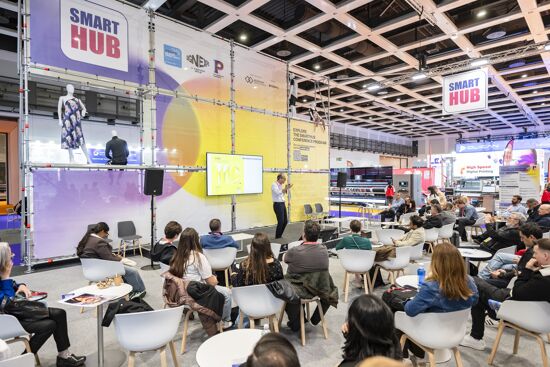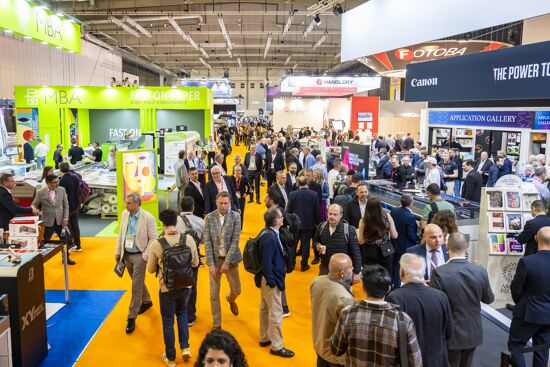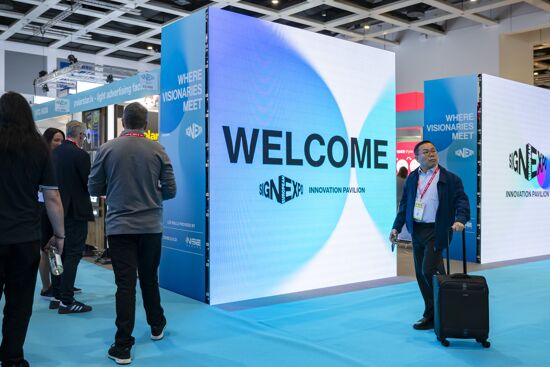Exploring Cutting-Edge Textile Printing Innovation with Adobe Print Engine 7

Adobe PDF Print Engine 7, launched at FESPA Global Print 2025, significantly advances textile printing. Debbie McKeegan shares how it automates non-white substrate management and RGB colour handling, expands colour gamuts with in-RIP multicolour transparency blending, and streamlines workflows for efficiency and sustainability. This update boosts customisation, reduces waste, and positions businesses at the forefront of digital print innovation.
At FESPA 2025 in Berlin, Adobe made waves with the launch of its Adobe PDF Print Engine 7 update, stacked with significant applications to support the print industry, and offering a powerful suite of tools set to further enable the automation of many mundane functions that the printer must execute in printed production. Through advanced automation, enhanced colour management, and support for sustainable practices, Adobe Print Engine 7 sets a new benchmark for digital printing capabilities.
We recently had the opportunity to explore these innovations in a conversation with Mike Scrutton of Adobe (Listen to the full podcast). Here’s a closer look at how Adobe Print Engine 7 is streamlining workflows, expanding creative possibilities, and tackling the unique challenges of textile printing. In this conversation with Fespa Textile Ambassador Debbie McKeegan, together they explore the latest software for printed products with a textile bias, focusing in on the key innovations for textile printers and manufacturers.
Tackling Challenges in Textile Printing
Textile printing has always been a complex undertaking, requiring solutions tailored to sector-specific challenges. Scrutton highlighted the following pain points and how Adobe’s innovations address them:
Managing Non-White Substrates: Textile printing often involves working with coloured or non-white substrates. Previously, this required manual adjustments and added steps in prepress to ensure optimal results. The latest Adobe Print Engine 7 software simplifies this process by automatically adding light white bases where needed. This not only improves image clarity but also reduces prepress time, allowing designers to focus on creativity.
Handling RGB and Custom Ink Sets: Many textile designs originate in RGB rather than CMYK, which presents a unique challenge when converting to printable formats. Adobe Print Engine 7 takes the lead by enabling seamless gamut mapping and handling of RGB files, ensuring more accurate colour reproduction. Additionally, it supports a wide range of custom ink sets, making it easier than ever to print high-quality designs on diverse materials.
Sustainability in Fabric Finishing: Sustainability is a growing priority in textile production. Scrutton touched on Adobe’s role in promoting natural finishing processes that eliminate harsh chemicals, delivering fabrics with a soft and natural hand feel. Adobe Print Engine 7’s automation capabilities further minimise waste, contributing to environmentally conscious workflows.
Advancements in Colour Management
One of the standout features of Adobe Print Engine 7 is its ability to significantly broaden colour management.
Going Beyond CMYK: Traditional CMYK printing often falls short in replicating vibrant colours, particularly when dealing with greens and oranges. Adobe addresses this with expanded colour gamuts, delivering richer and more true-to-life prints. This is a game-changer for brands requiring exact colour accuracy to reflect their unique identity.
Multicolour Transparency Blending: Transparencies in multi-coloured designs were historically challenging to blend, often yielding suboptimal results. Adobe's latest update introduces in-RIP multicolour transparency blending, a first in the industry. Designs now transition seamlessly across a broader range of colours while retaining vibrant intensity and depth.
Meeting Brand Expectations: For consumer-facing products, brand consistency is non-negotiable. Print Engine 7 empowers designers to achieve spot-on results every time by pre-emptively manipulating colours before CMYK conversion. This ensures that brand expectations are met with precision, fostering trust and satisfaction.
Revolutionising Workflow Automation
Scrutton stressed the vital role of automation in digital printing, particularly for on-demand and small-volume runs. Print Engine 7 streamlines complex workflows with features that reduce manual intervention:
Fewer Steps, Smarter Workflows: From prepress adjustments to final production, the software helps to eliminate unnecessary processes. By integrating tasks like bleed generation, cutline expansion, and variable data merging directly into the RIP, the engine enables printers to skip multiple prepress stages, saving substantial time and resources.
Seamless Integration for Illustrator and Photoshop Files: For designers submitting jobs through Adobe Illustrator or Photoshop, the software offers a time-saving advantage by rendering files directly within the RIP. This eliminates the need for intermediate format conversion, speeding up project completion and enabling last-minute tweaks.
Linking QR Codes and Variable Data: Modern print jobs often demand interactivity and personalisation. Adobe Print Engine 7 offers in-RIP merging of variable data and facilitates seamless integration of unique elements like QR codes and serial numbers. This is particularly valuable for connected fulfilment, enabling businesses to enhance product tracking and streamline their workflows.
Implications for Digital Printing and On-Demand Services
The shift from analog to digital printing has unlocked next-level potential for customisation and efficiency. Scrutton reflected on how Adobe is perfectly positioned to meet the rising demand for on-demand and small-run printing by balancing flexibility with scalability.
He also hinted at exciting future advancements for print embellishments, noting that future updates could support the addition of special effects, digital silver and gold elements for enhanced visual impact. These embellishments promise to bring a luxurious touch to designs, and added value, without the typical cost and complexity of traditional processes.
Looking to the Future of Textile Printing
Scrutton’s vision for the future revolves around innovation, sustainability, and automation. He emphasised the importance of making digital design more intuitive and accessible, allowing designers to maintain creative control while leveraging powerful automation tools.
While Adobe Print Engine 7 has made strides in tackling intricate challenges in textile printing, Adobe remains committed to pushing the boundaries further. Exciting possibilities on the horizon include the embedded integration of advanced embellishments and deeper collaborations with hardware manufacturers to optimise end-to-end workflows.
Enhance Your Textile Printing: The Adobe PDF Print Engine 7 represents a quantum leap for digital printing, particularly in industries with high customisation demands like textiles. By improving colour accuracy, streamlining workflows, and promoting sustainable practices, it positions your business at the forefront of innovation.
Actionable Takeaways:
-
Adopt automation wherever possible to reduce manual errors and increase efficiency in your printing processes.
-
Leverage expanded colour gamuts to offer clients a broader range of vivid, true-to-life colours.
-
Explore connected fulfilment solutions to enhance trackability and streamline your workflow.
-
Stay on top of future trends in embellishments and multi-coloured substrates to gain a competitive edge.
Listen to the full podcast here:
Discover the latest news surrounding textile printing and software by signing up for FESPA World, FESPA’s free monthly newsletter that is available in English, German and Spanish. Sign up for free here.
Interested in joining our community?
Enquire today about joining your local FESPA Association or FESPA Direct
Recent news

Industry Experts Explore the Evolution of Smart Manufacturing in the Textile Industry
A FESPA SmartHUB roundtable at Personalisation Experience 2025 discussed smart manufacturing's transformative impact on the textile industry. Experts highlighted the shift to on-demand customisation, driven by digital printing, data analytics, and automation. Key takeaways included enhanced machine control, significant waste reduction through intelligent software and colour management, and improved sustainability via energy efficiency and near-shoring, ensuring agility and environmental responsibility in textile production.

FESPA 2025 gathers leading visionaries from across the speciality print industry in Berlin
FESPA Global Print Expo 2025, European Sign Expo and Personalisation Experience (6 – 9 May 2025, Messe Berlin, Germany) welcomed Visionaries from across the speciality print industry to shape the future of print, develop forward-thinking business strategies, and explore innovative ways to translate emerging industry trends into tangible growth opportunities.

FESPA Global Print Expo 2025 - Overall Highlights
FESPA Global Print Expo, Europe's leading print and signage exhibition returned to Messe Berlin from 6 - 9 May 2025.

European Sign Expo 2025 - Overall Highlights
European Sign Expo, Europe's leading signage and visual communications exhibition returned to Messe Berlin from 6 - 9 May 2025.